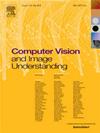A GCN and Transformer complementary network for skeleton-based action recognition
IF 4.3
3区 计算机科学
Q2 COMPUTER SCIENCE, ARTIFICIAL INTELLIGENCE
引用次数: 0
Abstract
Graph Convolution Networks (GCNs) have been widely used in skeleton-based action recognition. Although there are significant progress, the inherent limitation still lies in the restricted receptive field of GCN, hindering its ability to extract global dependencies effectively. And the joints that are structurally separated can also have strong correlation. Previous works rarely explore local and global correlations of joints, leading to insufficiently model the complex dynamics of skeleton sequences. To address this issue, we propose a GCN and Transformer complementary network (GTC-Net) that allows parallel communications between GCN and Transformer domains. Specifically, we introduce a graph convolution and self-attention combined module (GAM), which can effectively leverage the complementarity of GCN and self-attention to perceive local and global dependencies of joints for the human body. Furthermore, in order to address the problems of long-term sequence ordering and position detection, we design a position-aware module (PAM), which can explicitly capture the ordering information and unique identity information for body joints of skeleton sequence. Extensive experiments on NTU RGB+D 60 and NTU RGB+D 120 datasets are conducted to evaluate our proposed method. The results demonstrate that our method can achieve competitive results on both datasets.
用于基于骨骼的动作识别的 GCN 和 Transformer 互补网络
图卷积网络(GCN)已被广泛应用于基于骨骼的动作识别。虽然取得了重大进展,但其固有的局限性仍然在于 GCN 的感受野有限,阻碍了其有效提取全局依赖关系的能力。而结构上分离的关节也可能具有很强的相关性。以往的研究很少探讨关节的局部和全局相关性,导致无法充分模拟骨架序列的复杂动态。为解决这一问题,我们提出了一种 GCN 和变换器互补网络(GTC-Net),允许 GCN 和变换器域之间并行通信。具体来说,我们引入了图卷积和自注意组合模块(GAM),它能有效利用 GCN 和自注意的互补性来感知人体关节的局部和全局依赖关系。此外,针对长期序列排序和位置检测的问题,我们设计了位置感知模块(PAM),该模块可以明确捕捉骨架序列中身体关节的排序信息和唯一标识信息。我们在 NTU RGB+D 60 和 NTU RGB+D 120 数据集上进行了大量实验,以评估我们提出的方法。结果表明,我们的方法在这两个数据集上都能取得具有竞争力的结果。
本文章由计算机程序翻译,如有差异,请以英文原文为准。
求助全文
约1分钟内获得全文
求助全文
来源期刊

Computer Vision and Image Understanding
工程技术-工程:电子与电气
CiteScore
7.80
自引率
4.40%
发文量
112
审稿时长
79 days
期刊介绍:
The central focus of this journal is the computer analysis of pictorial information. Computer Vision and Image Understanding publishes papers covering all aspects of image analysis from the low-level, iconic processes of early vision to the high-level, symbolic processes of recognition and interpretation. A wide range of topics in the image understanding area is covered, including papers offering insights that differ from predominant views.
Research Areas Include:
• Theory
• Early vision
• Data structures and representations
• Shape
• Range
• Motion
• Matching and recognition
• Architecture and languages
• Vision systems
 求助内容:
求助内容: 应助结果提醒方式:
应助结果提醒方式:


